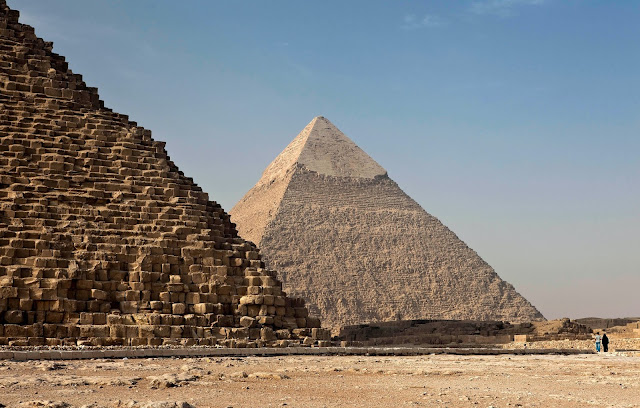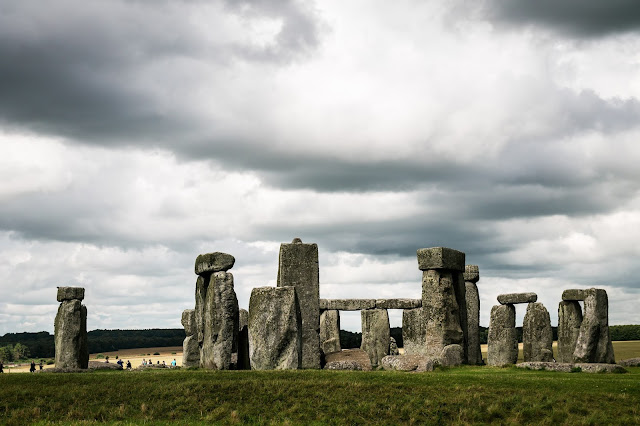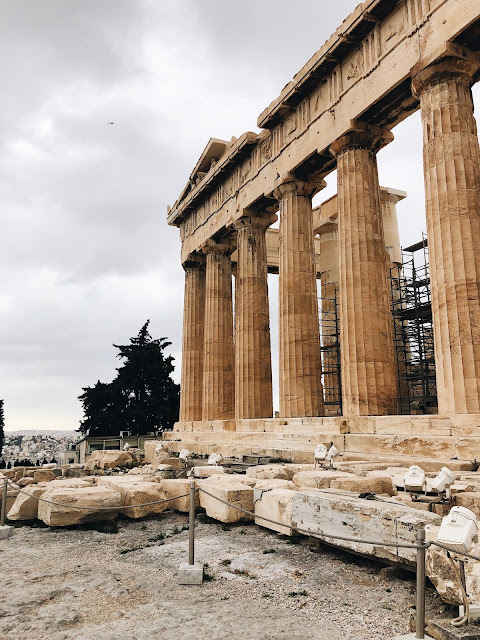What the Future Holds
If one were to approach a random stranger and ask him or her if America is a soccer nation, whether or not that person knew anything about the sport, the answer would probably be “no”. After all, the MLS (Major League Soccer) is only the fifth most viewed sport in the U.S.A, after American Football, Baseball, Basketball, and Ice Hockey respectively. In 2018 America's National Men’s team didn’t even make it into the World Cup, losing out to Trinidad and Tobago. Even America’s success story in soccer, the Women's National Team doesn’t seem to be particularly valued by its own country, garnering attention when it wins an international title, and then flatlining for years when it comes to regular season viewership. The women’s team is also paid less than the men’s team despite their much more impressive showings. Still, this, my final article, stands to prove that even in the face of all its many challenges, soccer is on track to keep growing as an American sport.
The NSL (National Soccer League) is only about 20 years old, and already has the following to fill NFL sized stadiums, something the NFL couldn’t do in its initial 20 years as a league. The MLS has broken its average season attendance for three years straight. The U.S. is a nation that boasts millions of players and supports a fanbase of millions more. In fact, America ranks sixth in world average attendance - ahead of both France and Italy. New men’s clubs are currently sprouting up across America with the introduction of new pro teams in LA, Miami, Atlanta, and others all being introduced to the MLS in recent years. Yet another good omen for American men’s soccer comes in the form of immigrants. Ever since the MLS signed a five year contract with internationally renowned former British pro footballer David Beckam in July 2007, more and more talented players have switched to play for Team U.S.A.. Such names as Ricardo Kaka, Thierry Henry, and Steven Gerrard, all of whom became known and respected in their home countries are now wearing the stars and stripes, placing their bets on the up and coming. The other kind of immigrant that spells good news for men’s soccer are the ones that come to the U.S. for life opportunities, especially those who come from soccer loving countries which are likely to support and become avid fans of the American teams. Not only are immigrants more likely to follow America’s men’s teams, but they are also more likely to grow up playing soccer. An estimated 13 percent of MLS players are second generation South American immigrants, and they bring a great deal of talent to the league. My final point in favour of Americas men’s pro soccer is that although they did lose out embarrassingly early in the 2018 World Cup, that is the first time that they hadn’t qualified in nearly 30 years - not a bad streak.
USA men’s pro team fills NFL team Texans stadium
The next topic of concern is that of the NWSL’s future. Before COVID-19 struck, the NWSL was planning to make an aggressive move towards expansion in 2020. The last post highlighted the successes of America's National Women’s Team. The most recent American victory, the 2019 Women’s World Cup, garnered the attention of more Americans than ever before. The NWSL had plans to harness the enthusiasm after flatlining three years prior. COVID-19 may have destroyed the NWSL season, but it didn't stop the league from expanding from nine teams to ten - welcoming the Racing Louisville into the NWSL ranks. The “Racing” in the name comes from the team’s close proximity to the home of the Kentucky Derby. It is a tradition for soccer teams located near great racing tracks to incorporate racing in the team name. By 2022 the NWSL plans to be a 14 team league, with cities across the country like Sacramento, Atlanta, Cincinnati, and Austin already showing interest in the prospect, it seems like an attainable goal for the set timespan. The NWSL picked up ESPN as a national TV partner as well as achieving a sponsorship from Bud Light and renewing another one with Nike. Thanks to the record setting turn out to the Women’s World Cup, NWSL president Amanda Duffy made it known in late 2019 that the NWSL games would be “in a different place from a commercial standpoint, and in a good position to propel us to a new television deal”. On top of all of this, the Portland Thorns set a new league record for average home game attendance of over 20,000 people filling the stands as well as reaching an end of season profit of over seven figures, another historic league record. Women’s pro soccer is making its move, the question is whether its efforts will stick.
Portland Thorns A team (2019)
A few months ago, the University of Cincinnati announced that it will no longer sponsor the men’s soccer program.
RIP Cincinnati Bearcats (1982-2020) May they rest in peace
The announcement was a surprise to absolutely no-one who follows the team. Men’s soccer is not a huge revenue point for schools, and with the coronavirus outbreak at hand, Cincinnati is not the only school looking at making this tough call due to lack of funding. The trouble that some college teams are currently in has led some to ask if college soccer is necessary in today's America at all. In recent years, national men’s teams have been investing heavily in training programs, and today it is more likely that a national men’s soccer team will recruit from it’s own secondary team than from college teams. This recruiting from a young age and drafting into secondary programs is commonplace throughout the rest of the world. It is a system that has proven highly successful, and oftentimes will lead to a better end player. Colleges are most concerned with winning games while a club has the freedom to focus on player development. So, should there be worry about whether college soccer might die in the U.S.? The short answer to this question is, “not any time soon”. When the current head coach of the Men’s National Team, Jurgen Klinsmann, was approached with the question, he made the point that America is a unique country when it comes to higher education and athletics. That is a good thing. In most European countries, a young person's future has been decided by the time he or she is 16 years old, but in America, no matter how many times that person may have fouled up academically, that person could have the chance to get themselves back in order and become a doctor, lawyer or even a politician. Klinsmann, and the rest of the MSL it seems agrees that this principle should hold true for soccer. So then, in the eyes of America's pro teams, they will be there to draft the early risers, and the colleges are there to pick up the second wave, a not unimportant task.
So, in conclusion, America is now, more than ever before, a soccer country, and it's only going up from here.
Recommended Readings for this Post
Because this blog post focuses on the future of soccer, my final citations are not up to the usual academic standards, nevertheless I encourage you to read them as they contain valid, up to date information.
Bonte-Friedheim, Julian. “Can Soccer Be the next Big American Sport?” Theperspective.com/, The PERSPECTIVE, 8 July 2019, www.theperspective.com/debates/sports/can-soccer-be-the-next-big-american-sport/.
This brief article takes a look at some of the most widely accepted reasons for why soccer, most specifically the MLS could come to be one of America’s next big sports. The article also weighs some counterpoints and challenges that soccer faces in collecting a competitive following.
Wahl, Grant. “What the Future Holds for NWSL in Pivotal, Historic Year for Women's Soccer.” Sports Illustrated, Sports Illustrated, 24 Oct. 2019, www.si.com/soccer/2019/10/24/nwsl-future-expansion-player-signings-us-soccer.
This second piece focuses on the NWSL and what the league is planning on to grow interest in teams on a national level.
Rollins, Sean. “College Soccer Remains Important to American Soccer.” The Mane Land, The Mane Land, 20 Apr. 2020, www.themaneland.com/2020/4/20/21226770/college-soccer-remains-important-to-american-soccer.
This final reading simultaneously examines school and club soccer, with an emphasis on men's collegiate level soccer and why it is weigning. The article gives some insight as to what direction pre-pro soccer is headed.







Comments
As mentioned in the last post companies like Vertex Pharmaceuticals, CRISPR therapeutics and BlueBird Bio have been conducting studies using CRISPR to treat SCD and β-thalassemia. Each company being in various stages of their clinical trials. From these trials it is too soon to make any definite conclusions on long term safety and effectiveness but preliminary statistics prove promising.
Basic overview of the treatment - A culture of cells are taken from the patient's bone marrow and extracted. Once extracted CRISPR is used to edit the HBB gene to enable the cell to produce fetal hemoglobin. Fetal Hemoglobin is the main source of oxygen to the fetus. Fetal hemoglobin stops being produced shortly after birth. The belief here is that in enabling the fetal hemoglobin will compensate for the defective hemoglobin that these patients have. This makes sense because it allows another method of oxygen to circulate through the red blood cells, as the adult hemoglobin has been compromised from the SCD and β-thalassemia.
In one study done by the Department of Medicine at the University of California, researchers implemented proof of developing a new potential approach for autologous transplantation therapy for the treatment of homozygous β-thalassemia and SCD. Researchers used CRISPR/Cas9 to revise the bone marrow of hematopoietic stem cells and progenitor cells (HSPCs) to the delete the hereditary persistence of fetal hemoglobin genotype, to treat SDC and β-thalassemia. Results of these studies showed that the erythroid cells extracted from the edited HSPCs exhibited considerably higher expression of fetal hemoglobin compared to the non edited cells. These results support the hypothesis that enabling fetal hemoglobin using CRISPR works and expands to other cells as they go through their life of dividing. The next question is does this help with SCD and β-thalassemia?
An additional study from Department of Developmental and Regenerative Biology at Mount Sinai School of Medicine goes in depth to describe the introduction to their research and their exact protocol which I have condensed below as follows: “Pharmacological treatments designed to reactivate fetal hemoglobin can lead to an effective and successful clinical outcome in patients with hemoglobinopathies. However, new approaches remain highly desired because such treatments are not equally effective for all patients, and toxicity issues remain. We have taken a systematic approach to develop an embedded chimeric peptide nucleic acid (PNA) that effectively enters the cell and the nucleus, binds to its target site at the human fetal hemoglobin promoter, and reactivates this transcript in adult transgenic mouse bone marrow and human primary peripheral blood cells.... In a number of these cases, the transcriptional onset and decline of a series of closely related genes are tightly and sequentially controlled, a process that is critical for attaining the correct genotypic readout and proper phenotypic effect. The critical requirement for correct regulation of this locus is demonstrated by the moderate to life-threatening clinical manifestations exhibited by the β-thalassemia. β-thalassemia is primarily caused by mutations in the Y-globin gene that lead to reduced or complete loss of hemoglobin expression. Along with other hemoglobinopathies (such as sickle cell disease), they give rise to the most common single gene genetic disorder worldwide . Pharmacological reactivation of the silent fetal globin chain provides a therapeutic benefit to these patients by compensating for absent adult hemoglobin globin chains (in β-thalassemia) or by interfering with the polymerization of mutant hemoglobin's (in sickle cell disease); however, these are not always free from complications. As a result, there remain compelling reasons to search for approaches and reagents that achieve reactivation with low toxicity and high penetrance. Peptide nucleic acids (PNAs) are oligonucleotide analogues in which the phosphodiester backbone of DNA is replaced by an achiral uncharged polyamide backbone . They are true DNA mimics, because they form Watson-Crick bonds with DNA and RNA, but are of higher thermal stability than natural duplexes due to the lack of electrostatic repulsion. They are also resistant to proteases and nucleases, and thus afford a significantly greater biological stability in culture and in vivo. A unique aspect of PNAs is that amino acids can be covalently added to the peptide backbone at either end of the sequence of bases. Of particular relevance for the present studies, the PNA/DNA interaction may occur through single-strand invasionβ. In this case the PNA, which can be of mixed sequence design, hybridizes with one strand of DNA through Watson-Crick base pairing and simply replaces the other strand of the double helix. This single strand design avoids the sequence limitations and modified base requirements inherent in PNA molecules that are based on a "clamp" or "bisPNA" structure design that binds DNA through triple helical base pairing (PNA/DNA/PNA). PNA molecules are thus promising candidates for clinical use as agents to modulate gene expression.”
I included that partial segment of the scientific article (cited below) to show you the language that is used along with the style and valuable information. This topic is broad and complex so please do not hesitate to comment any questions.
Work Cited
Xie, Fei, et al. “Seamless Gene Correction of β-Thalassemia Mutations in Patient-Specific IPSCs Using CRISPR/Cas9 and PiggyBac.” Genome Research, Cold Spring Harbor Laboratory Press, Sept. 2014, www.ncbi.nlm.nih.gov/pmc/articles/PMC4158758/.
X. Cao, WW. Deng, et al. “CRISPR-Mediated Gene Modification of Hematopoietic Stem Cells with Beta-Thalassemia IVS-1-110 Mutation.” Stem Cell Research & Therapy, BioMed Central, 1 Jan. 2018, stemcellres.biomedcentral.com/articles/10.1186/s13287-020-01876-4.
Hoban, Megan D, et al. “CRISPR/Cas9-Mediated Correction of the Sickle Mutation in Human CD34+ Cells.” Molecular Therapy : the Journal of the American Society of Gene Therapy, Nature Publishing Group, Sept. 2016, www.ncbi.nlm.nih.gov/pmc/articles/PMC5113113/.
Y;, Wen J;Tao W;Hao S;Zu. “Cellular Function Reinstitution of Offspring Red Blood Cells Cloned from the Sickle Cell Disease Patient Blood Post CRISPR Genome Editing.” Journal of Hematology & Oncology, U.S. National Library of Medicine, pubmed.ncbi.nlm.nih.gov/28610635/.
Park SH;Lee CM;Dever DP;Davis TH;Camarena J;Srifa W;Zhang Y;Paikari A;Chang AK;Porteus MH;Sheehan VA;Bao G; “Highly Efficient Editing of the β-Globin Gene in Patient-Derived Hematopoietic Stem and Progenitor Cells to Treat Sickle Cell Disease.” Nucleic Acids Research, U.S. National Library of Medicine, pubmed.ncbi.nlm.nih.gov/31147717/.
Comments